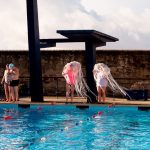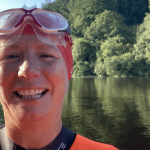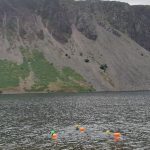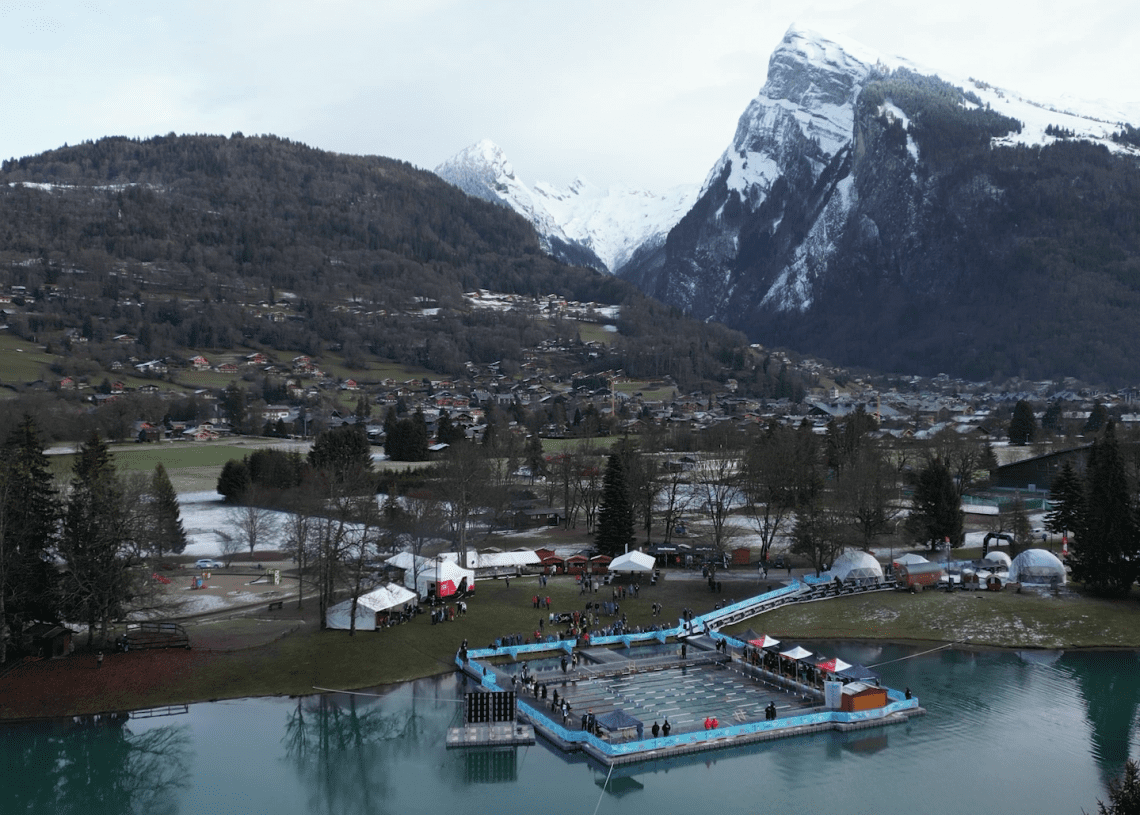
5th International Ice Swimming Association World Championships in Samoëns
In beautiful Samoëns, 500 swimmers from 42 countries descended for the 5th International Ice Swimming Association World Championships (IISAWC). An incredible number of records were broken, which elevated swimmers all round to swim at their best in Lac aux Dames. Joanne Jones and Jonty Warneken report.
Outdoor swimming is a vast and varied hobby, and the water welcomes all to swim. At its edges, it can also showcase the battle of the human body vs mother nature. I personally see this best in ultra marathon swimming: swimming as far and as long as possible. And then again in the ice: swimming as fast as you can, in as cold a water as you can find.
My swim journey has taken me from Channel swims to ice swims – and the World Championships
has been no exception in showcasing the excellence at the forefront of this sport. At the same time, it keeps the theme found with outdoor swimming everywhere – that clad in changing robes, bobble hats and huddled over a warm brew, you will find some of the best people you could ever meet.
GB had a strong team with over 40 swimmers competing in almost all events. We packed a huge punch, hauling 102 age group medals and four overall medals in a wide variety of events. Newcomers to the team, Martin and Michelle Lane won enough medals to rival some country totals with 16 medals and seven age group world records between them.
Other impressive swims with age group records came from Phil Duma, Laura Nesbit and Brian Bain. The World Championships seems to have stepped up a notch in terms of speed with Alisa Fatum (Germany) and Marcin Szarpak (Poland) both breaking their own records by several seconds each in the premier 1km event.
Equally, in the shorter distances, newcomer to the ice Keaton Jones (USA) won five events and set five world records, with several of his 100m swims under 60 seconds.
Afterwards, on Instagram he said: “I have never felt more support or camaraderie than I experienced this weekend, with every nation represented. Thank you IISA for opening my eyes to a new level of competitions. I’m not done with ice swimming just yet!”
For swimmers who are looking for ‘the next thing’ after Swim England pathways, masters training etc, why not explore ice swimming? It isn’t easy – sub five degree water can be painful to get into, especially when just swimming in a cap, goggles and swimsuit – but the challenge is magnificent, and the other swimmers are among some of the best you’ll find anywhere in the water.
There is so much more to swimming success than speed. Everyone has a story of how they came to the ice, and events like this is a wonderful time to talk and learn. In particular, you cannot help but be impressed by the para-athletes competing in heats alongside other athletes and often holding their own.
This year it was a privilege and a joy to watch Jonty Warneken form the first para ice relay team. Jonty has been pioneering the para category in the ice for nine years and watching the para 4 x 250m relay, it was clear what it meant to each and every athlete and spectator involved in their journeys.
For me, while I am nowhere near the super speedy end of the spectrum that is in contention for world records, competing at world championships was beyond my wildest dreams. As a club swimmer in my teens, I was rarely picked for anything more than county championships. But I continued to swim because I love it, and now to swim on an international stage has been incredible.
This World Championships is also a celebration that I can still do what I loved before I became a mum, and swim well. To get three personal best times and three top 20 finishes was brilliant, and to have my daughter watch me swim is something I will remember forever.
Thanks to Samoëns and the French International Ice Swimming Committee for hosting us all.
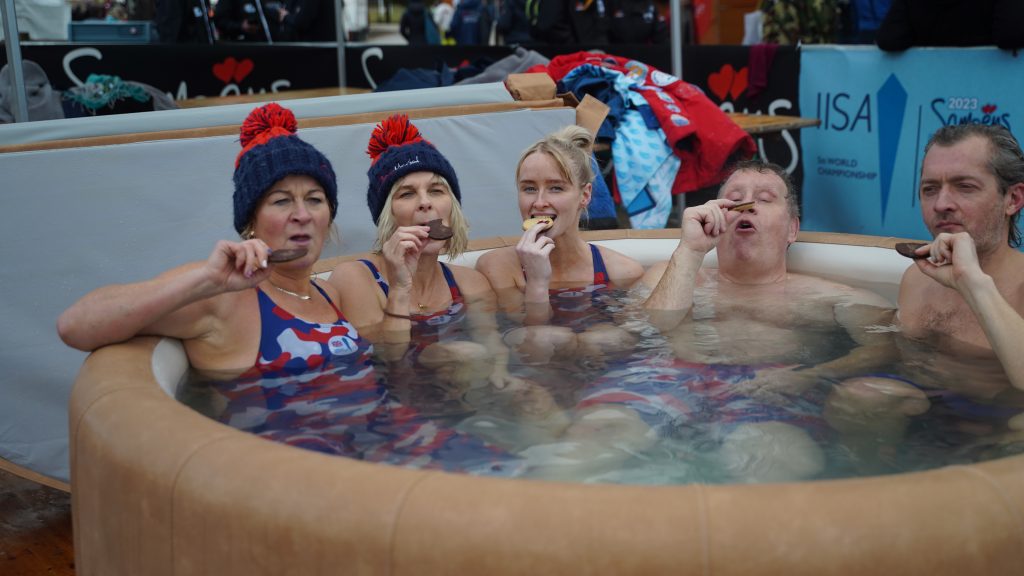

First World Para Ice 4 X 250m Relay
The 5th International Ice Swimming World Championships in Samoëns, France, didn’t start well for me. A potentially serious medical issue that began on the morning of the first day of competition meant my dream of swimming looked to be over before it even started, let alone putting together the first ever para 4 x 250m relay.
There was one glimmer of hope and that was that the head doctor would retest me to enable me to swim on the Sunday. Thankfully, he agreed to repeat my medical on Friday lunchtime. If I passed, he said he might let me swim…
But, if permission was granted, there were still a number of issues that needed to be pushed through the administrative engine of the world championships.
So, I would have to…
One: get over my disappointment of not being able to swim in the 1km and 500m events and find three other para/adaptive swimmers who would be able and willing to swim 250m on Sunday.
Two: use all my persuasive skills to convince the French authorities to allow me to put in a para team into the grand finale of the Championships – the 4 x 250m Country Relay. The entry cut offtime was two weeks prior…
Three: get IISA approval to swim as one ‘World Para’ team.
Four: also convince the French Swimming Federation (who were organising the event) to allow us to put in a new team (that wasn’t a country) into the country race.
Five: get the agreement of the event director and referee to allow us to swim.
Six: work out the logistics of how to get four swimmers with various disabilities in and out of the water safely during the pressure of the finale of the whole championships and without getting in the way of the other relay teams.
First things first though: find the swimmers.
I grabbed Nicola Doran of Ireland whom I had met at the Irish Long Distance Swimming Association awards. She agreed before I even finished asking. Nicola said she would find Patricia Heffernan, also from Ireland. I then went to find Tina Deeken of Germany whom I hadn’t met but knew to be a prolific para ice swimmer. Not easy as Tina spent more time in the water than out of it. The German team found her and she agreed straight away. Team sorted.
Next: Friday lunchtime, medical passed. Now to get everyone else onside. I found Ram Barkai, the Chairman of IISA and he agreed, as did the other IISA board members and members of the Ice Swimming hall of fame. Getting all the organisers onside made my life infinitely easier, until I got a tap on the shoulder from one of the French organisers.
“Jonty, we need a country as the system has to have a country in it”.
I explained that we wanted to swim as ‘Team World Para’. Sometime later the official returned with the news we had been hoping for: they would adapt the system to allow us to swim as a team rather than a country. I find the rest of the team, tell them we’re swimming, and then try not to think about what we were about to achieve. Overwhelming
emotions through the biggest smiles!
The Big Day (Sunday) arrived.
First, I swam my 50m freestyle, came straight out, changed costumes, assembled the team, demolished some jelly babies, and went straight to muster. Sit down, kit on and breathe… and that’s when it hit me.
This was the culmination of a nine-year dream. Here we were, competing with teams of the world’s best ice swimmers (some of them Olympians), but it didn’t matter to them or us. What mattered was para ice swimming had finally made it to the start of this race as their equals.
It was the toughest race I have ever swum. Halfway I got overcome with the whole emotion of what I was doing. None of us felt the cold; we just swam our hearts out with smiles on our faces and tears in our eyes. This meant so much to us all. We have all been through so much just to get there: all the daily pain, suffering, disappointments, operations, shattered dreams, curtailed careers, fear, anger, heartache and the worries that come with being disabled, were washed away in that 25m pool of icy water.
So what’s the future? Well, para ice swimming is now here to stay and we’ve demonstrated that anything is possible for the disabled community. It’s an extreme sport that is open to all (and very adaptive!) so please, if you’re interested, do come and find us. I hope, at the next World Championships in 2025, when I stand on the edge of the pool for my 1km race, I look down all the lanes and they are filled by para swimmers.
This article is from the February issue of Outdoor Swimmer. Click here to subscribe to the magazine.
To see all the online content from the February 2023 issue of Outdoor Swimmer, visit the 'Challenge' page.





